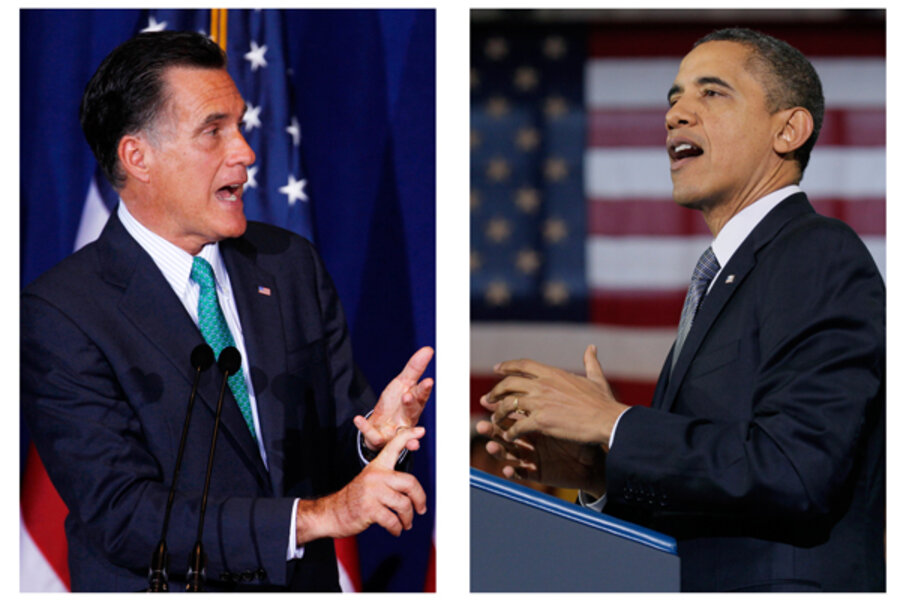Convention bounce: How much will Romney and Obama get?
Loading...
| Washington
It’s a perennial question in Washington: How much “bounce” do the Democratic and Republican conventions give their nominees?
“Both get a bounce,” says Republican pollster David Winston. “You get to make your case without interference.”
The numbers seem to bear him out. One Gallup analysis in 2008 showed that, of 22 conventions between 1964 and 2004, only two candidates received no uptick in the polls: Democrats John Kerry (2004) and George McGovern (1972). The median increase: 5 points.
Research by Larry Sabato, a political scientist at the University of Virginia in Charlottesville, shows that in more than 24 conventions since 1960 Democrats have averaged about a 7.3 point jump in the polls, and Republicans about 6.4 points.
But how much the candidates actually benefit from any surge depends in part on where they stand before the convention. A standard-bearer who starts at 36.5 percent and goes up 7.3 points is no better than one who starts at 32 percent and goes up 6.4 points. The increase is 20 percent in both cases.
And there’s a further complication. Until this year, campaigns have started in earnest after the conventions. Not this time around. More than half a billion dollars has already been spent on TV ads. That’s as much as the entire 2008 campaign. Analysts theorize that one reason Republican Mitt Romney’s choice of Wisconsin Rep. Paul Ryan to be his running mate hasn’t given the campaign more of a bump is the massive amounts of spending on political attack ads, spurred in part by the US Supreme Court’s controversial Citizens United decision. Some experts believe the constant barrage of ads will depress any spike at the polls coming out of the conventions this year as well.
Even if it doesn’t, and the conventions give the candidates a measurable bounce – will it last?
Ah. There are numbers for that, too. Mr. Sabato’s figures show that in 10 elections the post-convention numbers were close to the final results; the other 14 were “off the mark.” But that doesn’t mean those 14 candidates lost the election.
And those who know statistics are leery of saying that Election Day numbers for the “close” ones were in any way related to the convention bounce. For one thing, there are too many other factors that could influence the outcome – candidate debates and unexpected news events, to name just two.
The biggest bounce in recent convention history – Bill Clinton’s 16-point surge in 1992 – was complicated, Mr. Winston says, by an outside development: The day before Mr. Clinton gave his acceptance speech third party candidate Ross Perot dropped out of the race. When Mr. Perot got back in, Clinton’s lead sank to 10 points. Precisely how Perot influenced those numbers is tough to measure.
Another complication: measuring the bounce when conventions are close together – or during Labor Day.
“Polling over Labor Day Weekend is always a problem,” ABC polling director Kathy Frankovic wrote in 2008. “We confront more than the usual number of people who don’t respond or can’t respond. People are away from their homes, heading back from summer vacation, or preparing their children for the start of the school year.”
This year Republicans end their convention the day before Labor Day weekend. The Democrats start their’s on Labor Day. Don’t expect precision.
And keep in mind a comment by Democratic pollster Geoff Garin. “The bounce is bigger,” he says, “when what’s communicated is an argument and case you can sustain.” In other words, if you break fast from the gate, you still win only if you finish fast.
Bottom line: Expect something of a post-convention bounce for both Romney and Obama. Will we be able to test the lasting effects – and will it be decisive? Who knows.







